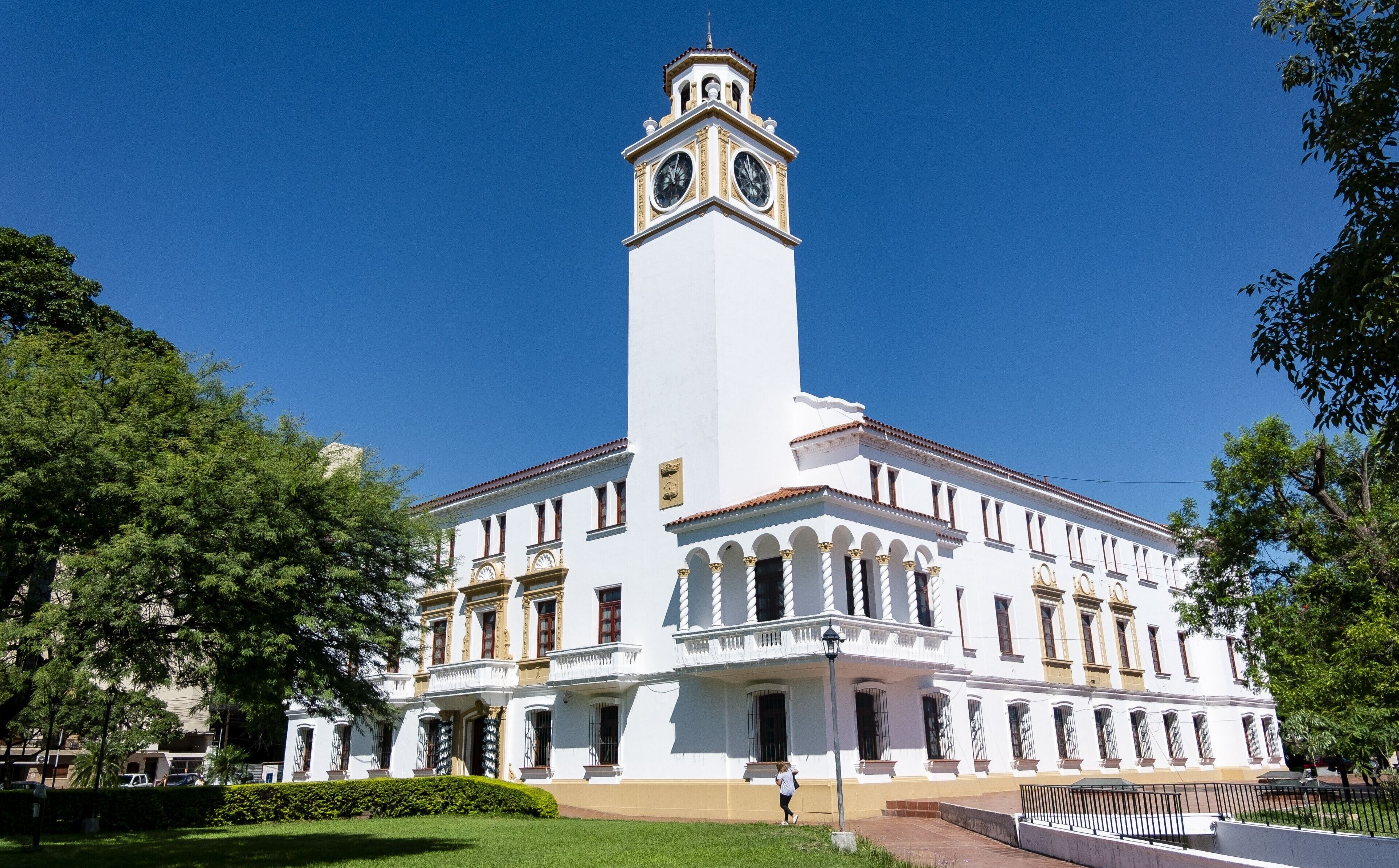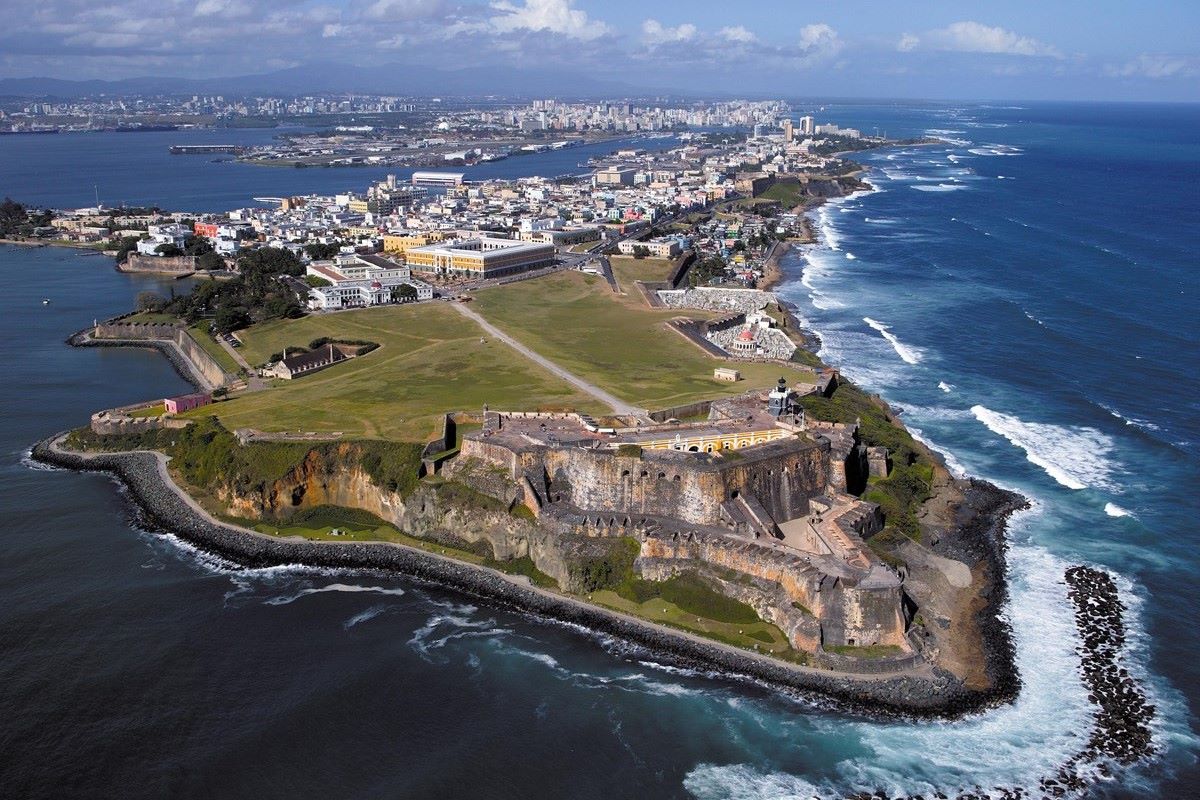
Santiago del Estero is a city rich in history and culture, located in northern Argentina. Known as the oldest city in the country, Santiago del Estero boasts a fascinating past that dates back to the 16th century. The city showcases a unique blend of indigenous traditions and Spanish colonial influence, making it a captivating destination for history buffs and explorers. With its charming architectural structures, vibrant arts scene, and warm hospitality, Santiago del Estero offers visitors an immersive experience that highlights the city’s distinct character. From its iconic landmarks to its delicious local cuisine, there’s no shortage of things to discover in Santiago del Estero. In this article, we will uncover 48 interesting facts about Santiago del Estero, providing a deep dive into the city’s heritage, intriguing events, stunning natural landscapes, and much more. So buckle up and get ready to embark on a journey through the enchanting city of Santiago del Estero!
Key Takeaways:
- Santiago del Estero, the oldest city in Argentina, is a vibrant hub of culture and tradition, offering a rich blend of history, folklore, and natural beauty for visitors to explore and enjoy.
- From its renowned folk music and handcrafted pottery to its warm hospitality and diverse festivals, Santiago del Estero welcomes visitors with open arms, promising an unforgettable experience steeped in tradition and charm.
Santiago del Estero is the oldest city in Argentina.
Founded on July 25th, 1553, Santiago del Estero holds the distinction of being the oldest continuously inhabited city in Argentina, predating even Buenos Aires by several decades. Its rich history is evident in its colonial architecture and cultural heritage.
The city is known as the “Mother of Cities” in Argentina.
Due to its historical significance as the first Spanish settlement in Argentina, Santiago del Estero is often referred to as the “Mother of Cities” in the country. It served as a crucial hub for Spanish colonial expansion throughout the region.
Santiago del Estero is the capital city of the Santiago del Estero Province.
As the provincial capital, Santiago del Estero is the political, economic, and cultural center of the region. It is located in the north-central part of Argentina, close to the border with Bolivia.
The city experiences a subtropical climate.
Santiago del Estero enjoys a subtropical climate, characterized by hot summers and mild winters. The average temperature throughout the year ranges from 22 to 30 degrees Celsius (72 to 86 degrees Fahrenheit).
Santiago del Estero is known for its folklore and traditional music.
The city has a vibrant folk music scene and is famous for its traditional musical genres such as chacarera and zamba. Santiago del Estero hosts numerous festivals and events celebrating folk music and dance throughout the year.
It is home to the Santiago del Estero Cathedral.
The Santiago del Estero Cathedral, also known as the Cathedral Basilica of Our Lady of the Assumption, is a significant architectural landmark in the city. It was constructed in the 16th century and boasts a beautiful blend of Spanish colonial and neoclassical styles.
Santiago del Estero is renowned for its handcrafted pottery.
The city is known for its traditional pottery production, which showcases exquisite craftsmanship and unique designs. Visitors can explore local markets and workshops to witness the creation of beautiful pottery items firsthand.
The Quimilí Lagoon is a popular tourist attraction in Santiago del Estero.
The Quimilí Lagoon, located near Santiago del Estero, is a picturesque natural reserve with stunning flora and fauna. It offers opportunities for boating, fishing, and bird watching, making it a favorite spot among nature enthusiasts.
Santiago del Estero hosts the National Festival of Chacarera.
The National Festival of Chacarera is an annual event held in Santiago del Estero, celebrating the traditional music and dance of the region. It attracts performers and visitors from all over Argentina, showcasing the rich cultural heritage of the city.
The city is known for its local cuisine.
Santiago del Estero is renowned for its delicious traditional foods, including empanadas, locro (a hearty stew), and puchero (a meat and vegetable dish). Visitors can indulge in these mouthwatering delicacies at local restaurants and food stalls.
Santiago del Estero is surrounded by natural beauty.
The city is nestled amidst breathtaking landscapes, including rolling hills, rivers, and forests. It provides ample opportunities for outdoor activities such as hiking, horseback riding, and nature exploration.
It has a rich indigenous heritage.
Santiago del Estero is home to various indigenous communities, preserving their ancient traditions and cultural practices. Visitors can engage with indigenous artisans and learn about their customs and way of life.
The city is a hub for agricultural production.
Santiago del Estero is an important agricultural center, known for its production of crops such as soybeans, corn, and cotton. The fertile soil and favorable climate contribute to the region’s thriving agricultural sector.
Santiago del Estero is a gateway to the Pampas region.
The city serves as a starting point for exploring the vast Pampas region of Argentina, known for its sprawling grasslands and gaucho culture. Visitors can venture further into the Pampas and experience the authentic rural lifestyle.
It has a strong sports culture.
Santiago del Estero is passionate about sports, with soccer, basketball, and rugby being popular among the locals. The city has produced several athletes who have excelled in these sports at a national and international level.
Santiago del Estero is home to the Autódromo Termas de Río Hondo.
The Autódromo Termas de Río Hondo is a renowned racetrack located near Santiago del Estero. It hosts international motorsport events, most notably the Argentine motorcycle Grand Prix.
The city celebrates Carnival with vibrant parades.
During the Carnival season, Santiago del Estero comes alive with colorful parades, lively music, and elaborate costumes. It is a time of festivities and celebration, attracting both locals and tourists.
Santiago del Estero is known for its warm hospitality.
The people of Santiago del Estero are renowned for their warmth and friendliness. Visitors are often welcomed with open arms and can experience the genuine hospitality of the locals.
The city has a diverse cultural heritage.
Santiago del Estero is a melting pot of different cultural influences, including Spanish, indigenous, and criollo traditions. This diversity is reflected in its architecture, cuisine, music, and festivals.
Santiago del Estero is a center for traditional textile production.
The city’s skilled artisans produce exquisite textiles, including woven fabrics, rugs, and ponchos, using traditional techniques passed down through generations. Visitors can purchase these unique items as souvenirs.
It is home to El Bajo, a historical neighborhood.
El Bajo is a charming neighborhood in Santiago del Estero known for its well-preserved colonial houses and narrow cobblestone streets. It offers a glimpse into the city’s past and is a favorite spot for leisurely walks.
Santiago del Estero has a vibrant street art scene.
The city is adorned with colorful murals and street art, showcasing local talent and adding vibrancy to its urban landscape. Visitors can explore the streets and discover these artistic gems around every corner.
The city hosts the International Quena Festival.
The International Quena Festival is a music festival dedicated to the quena, a traditional Andean flute. Santiago del Estero welcomes musicians from Argentina and around the world to celebrate this unique instrument.
Santiago del Estero has a thriving craft beer scene.
The city is witnessing a growing craft beer industry, with local breweries producing a wide range of innovative and delicious beers. Visitors can enjoy a pint of craft beer in one of the many trendy bars and breweries.
It is home to the National University of Santiago del Estero.
The National University of Santiago del Estero is a prestigious educational institution, offering a wide range of academic programs. It contributes to the intellectual and cultural development of the city and the region.
Santiago del Estero has a vibrant nightlife.
When the sun goes down, the city comes alive with bustling bars, clubs, and music venues. Santiago del Estero offers a diverse range of nightlife options to cater to different tastes and preferences.
The city hosts the Santiago del Estero International Film Festival.
The Santiago del Estero International Film Festival showcases the best of national and international cinema, promoting cultural exchange and film appreciation. It attracts filmmakers, actors, and cinephiles from around the world.
Santiago del Estero has a rich literary heritage.
The city has produced many renowned writers and poets, contributing to Argentina’s vibrant literary tradition. Local bookstores and libraries are treasure troves for literature enthusiasts.
It is known for its traditional leatherwork.
Santiago del Estero has a long history of leathercraft, with skilled artisans crafting high-quality leather products. Visitors can find a variety of leather goods, including bags, shoes, and belts.
Santiago del Estero is a paradise for birdwatching.
The diverse ecosystem surrounding the city offers excellent birdwatching opportunities. Bird enthusiasts can spot a wide variety of species in the wetlands, forests, and natural reserves nearby.
The city celebrates the Festival of the Virgen del Carmen.
The Festival of the Virgen del Carmen is a religious celebration that takes place in Santiago del Estero. It includes processions, religious ceremonies, and traditional dances, attracting pilgrims from different parts of the country.
Santiago del Estero is a gateway to archaeological sites.
The region surrounding the city is rich in archaeological sites, including ancient ruins and pre-Columbian settlements. History buffs can explore these sites and delve into the fascinating indigenous past.
It is famous for its traditional silverware.
Santiago del Estero is renowned for its exquisite silverware crafted by skilled artisans. Visitors can find intricate silver jewelry and decorative items that showcase the city’s craftsmanship.
The city hosts the Santiago del Estero Tango Festival.
Tango lovers flock to Santiago del Estero during the annual Tango Festival, a celebration of this passionate and seductive dance. Visitors can attend performances, workshops, and milongas to experience the magic of tango.
Santiago del Estero is an important center for rodeo events.
The city hosts various rodeo competitions, attracting skilled horse riders and gauchos from all over Argentina. Rodeo enthusiasts can witness thrilling displays of horsemanship and traditional equestrian skills.
It has a strong tradition of horse breeding.
Horse breeding is deeply rooted in Santiago del Estero’s culture, and the city is known for its exceptional horses. Visitors can explore ranches and equestrian centers to learn more about this time-honored tradition.
Santiago del Estero has a vibrant indigenous crafts market.
Local artisans showcase their traditional crafts at Santiago del Estero’s indigenous crafts market. Visitors can browse through an array of handmade textiles, pottery, and handicrafts while supporting local communities.
The city celebrates the National Day of Quilmes.
The National Day of Quilmes is an annual celebration honoring the Quilmes indigenous people, who have a significant historical presence in the region. The festival includes traditional rituals, music, and dancing.
Santiago del Estero is a gateway to the Quebrada de los Sosa.
The Quebrada de los Sosa is a breathtaking natural gorge located near Santiago del Estero. Visitors can explore this scenic wonderland, featuring towering cliffs, cascading waterfalls, and lush vegetation.
It is known for its traditional dance festival, La Tardecita Santiagueña.
La Tardecita Santiagueña is a popular traditional dance festival held in Santiago del Estero. It brings together dancers from various folk groups to showcase the regional dances, costumes, and music.
Santiago del Estero is home to several historical museums.
The city boasts a collection of museums that provide insight into its rich history, including the Historical Museum of Santiago del Estero and the Indigenous Art Museum. These museums house artifacts and exhibits that chronicle the city’s past.
The city has a unique blend of architectural styles.
Santiago del Estero showcases a fascinating mix of architectural influences, ranging from Spanish colonial to neoclassical and art deco. Walking through its streets offers a visual feast for architecture enthusiasts.
Santiago del Estero hosts a traditional Easter festival.
During Easter, Santiago del Estero comes alive with religious processions and festivities. The festival showcases the region’s deep-rooted Catholic traditions and offers a spiritual experience for locals and visitors.
The city prides itself on its textiles made from the Caranday palm.
Santiago del Estero is known for its unique textiles made from the fibers of the Caranday palm. Local artisans skillfully weave baskets, bags, and hats using this natural material.
Santiago del Estero is a land of festivals.
The city hosts numerous festivals throughout the year, celebrating music, food, dance, and cultural traditions. These vibrant events attract visitors from near and far, adding to the lively atmosphere of Santiago del Estero.
It is a paradise for outdoor enthusiasts.
Nature lovers can indulge in various outdoor activities in Santiago del Estero, such as hiking, camping, fishing, and horseback riding. The region’s natural beauty provides endless opportunities for adventure and exploration.
Santiago del Estero embraces its folklore and traditional customs.
The city takes great pride in preserving its folklore and traditional customs. Visitors can witness traditional music and dance performances, participate in local festivities, and immerse themselves in the local culture.
Santiago del Estero is a vibrant and welcoming city.
With its rich history, cultural heritage, and warm hospitality, Santiago del Estero offers a unique and unforgettable experience to all who visit. The city’s charm lies in its traditions, natural beauty, and the vitality of its people.
Conclusion
In conclusion, Santiago del Estero is a fascinating city with a rich history, vibrant culture, and stunning natural beauty. With its diverse range of attractions, from ancient archaeological sites to modern shopping centers, there is something for everyone to enjoy in this enchanting city. Whether you are a history buff, nature lover, or food enthusiast, Santiago del Estero has something to offer. So, don’t miss the opportunity to explore this hidden gem in Argentina and discover the many wonders it has to offer.
FAQs
Q: What is the population of Santiago del Estero?
A: The estimated population of Santiago del Estero is around 274,000 people.
Q: What is the best time to visit Santiago del Estero?
A: The best time to visit Santiago del Estero is during the spring and autumn seasons when the weather is pleasant and temperatures are comfortable.
Q: Are there any ancient ruins in Santiago del Estero?
A: Yes, Santiago del Estero is home to the Quilmes Ruins, an ancient pre-Columbian archaeological site that offers a fascinating glimpse into the region’s history.
Q: Can I visit Santiago del Estero on a day trip?
A: While it is possible to visit Santiago del Estero on a day trip, it is recommended to stay for at least a couple of days to fully explore the city and its surroundings.
Q: What are the must-visit attractions in Santiago del Estero?
A: Some of the must-visit attractions in Santiago del Estero include the Casa de Gobierno, the Santiago del Estero Cathedral, the Museo de Arte Sacro, and the Termas de Río Hondo thermal baths.
Q: Is Santiago del Estero a safe city for tourists?
A: Santiago del Estero is generally a safe city, but it is always advisable to take necessary precautions and be aware of your surroundings, especially in crowded areas and at night.
Embark on a captivating journey through the rich tapestry of Santiago del Estero, where ancient traditions blend seamlessly with modern vibrancy. From its status as Argentina's oldest city to its thriving cultural scene, there's no shortage of fascinating facts to uncover. But why stop there? Continue your exploration of this remarkable continent by diving into the intriguing world of South America, where countless wonders await your discovery.
Was this page helpful?
Our commitment to delivering trustworthy and engaging content is at the heart of what we do. Each fact on our site is contributed by real users like you, bringing a wealth of diverse insights and information. To ensure the highest standards of accuracy and reliability, our dedicated editors meticulously review each submission. This process guarantees that the facts we share are not only fascinating but also credible. Trust in our commitment to quality and authenticity as you explore and learn with us.


